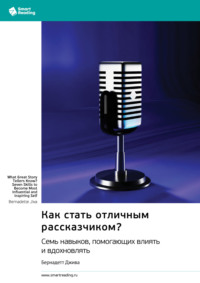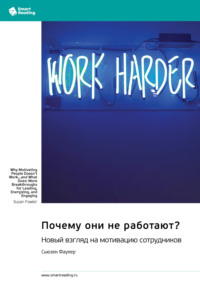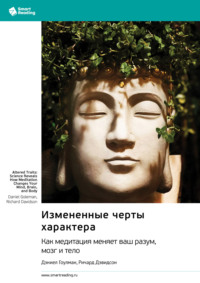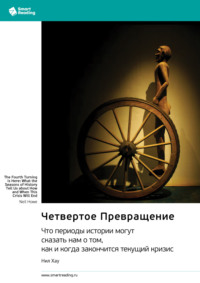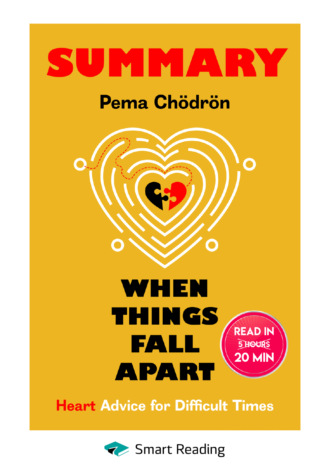
Полная версия
Summary: When Things Fall Apart. Heart Advice for Difficult Times. Pema Chödrön

Summary: When Things Fall Apart. Heart Advice for Difficult Times. Pema Chödrön
Автор:
Pema Chödrön
Оригинальное название:
When Things Fall Apart. Heart Advice for Difficult Times
www.smartreading.ru
Buddhism During Difficult Times
Before she became a Buddhist nun, Pema Chӧdrӧn worked as a primary school teacher and was married with three children at home. Everything started to change on the fateful day when her husband came home from work and told her he was having an affair. Responding to the question how she came to Buddhism, Pema jokes that it was because she was so outraged at her husband. In reality, when her marriage ended, she tried to put her life back together in the usual way, but it didn’t work. Then she realized that the only way out was to leave the old, dependent version of herself behind and allow her ego to be completely destroyed so she could work with was left of her once indestructible self.
"When Things Fall Apart: Heart Advice for Difficult Times" was first published in 1997 and included lectures and presentations that Pema Chӧdrӧn delivered between 1987 and 1994. This was many years ago, but the content of this book is as relevant as ever. During times of turbulence, uncertainty, and an unclear future, all of us feel fear, pain and anxiety. Apart from major global catastrophes there are still both big and small tragedies happening in all of our lives. We face loss and disappointment, and we live through personal crises and difficult family and career stages. How do you cope with all this pain? How do you preserve the ability to love and feel compassion, and for yourself as well?
Pema Chӧdrӧn answers the question like this: "Life is our best teacher and friend." If we opt not to run away from life’s lessons, if we refuse to hide from what our fate brings us and, do the opposite, open up to pain, let ourselves feel all these emotions, negative ones included, truly let ourselves linger on the edge of an abyss, we can learn. We learn to relax in the very heart of chaos, keep calm and treat all living beings close to us and distant from us with sincere compassion and kindness.
In her book, Pema Chӧdrӧn provides practical techniques and instructions to help calm the mind, treat the wounds of the heart and turn the poison of suffering into a healing elixir. Such moments, when the ground crumbles under your feet and the familiar world falls apart, can become turning points in our lives. This is the way we learn that absence of stability is actually the key to life. The moment we accept this, we start healing from illusions and unconsciousness. There is room for everything in life, grief and joy, tension and relief, sorrow and bliss. And, fortunately for us, we indeed don’t know what’ll come next. The death of our hopes may become a starting point for something new and beautiful.
When Things Fall Apart
When life makes an unexpected twist, the first thing that we feel is fear. And that’s perfectly fine. Fear is a universal emotion and it’s known to all the living creatures on the planet. That we experience fear when facing a prospect of loneliness, death, unknown future is natural, because the closer you are to the truth, the scarier it becomes.
Often our first and only reaction to fear is to run away in whatever direction we decide. The worst possible reaction to fear would be to eat, drink, binge-watch series, enter pointless relationships – in other words, when we do something to avoid having to look fear in the eyes. The best reaction is when we recognize fear as an indicator of an issue that has to be urgently resolved, and then the fear will go away forever. Or will it?
Fear won’t go away forever, of course, because it is part of life. So why don’t we get to know this feeling a little better? All that you need to do this is to stop and stay in it for a while. You need not deny the existence of fear, distract yourself in all possible ways or perceive it as an indicator of an issue. Look at it as a chance to completely give up your old way of reacting to fear.
The next time when you experience fear think of it as being a fortunate opportunity. Because it’s only through our accepting fear that we can pass through to courage. We are used to thinking that brave people never fear anything. Actually, brave people also experience fear all the time, but they don’t deny it and learn to move on despite everything.
After fear comes pain. When your familiar world collapses and the ground crumbles under our feet, you are left one-on-one with your true reflection in the mirror. We see all of our blemishes, wrinkles, aggression, lack of goodness and humility. The most vulnerable and tender spot of our soul are on display for us. We should you do with this tenderness: hide from it in resentment or shiver but let it into our life?
Pain is trial by fire and gives us the opportunity to awaken our heart. Any pain is connected to loss: loss of a loved one, your youth, health, or your daily routine in life. Pain emerges on the scene when our hope that everything will always be good or at least stable shatters. But the truth is that nothing ever gets fixed completely: pieces are glued back together only to fall apart again, over and over. That is the essence of life. And pain is a chance to launch the process of healing. We remain healthy when we give a seat at the table to everything that happens to us in life: be it grief, relief, despair, or joy.
The most important thing to give a voice to is the unknown. During hard times we attempt to do things that we believe will help. But truth is we don’t know whether it will help or not. We don’t know whether this is the end or a start of a great adventure. When we find ourselves on the edge of an abyss, this is the time to fulfill our primary goal: just stand there and preferably avoid trying to dive into the specifics of your pain.
In Buddhism, the hope that we can learn to always feel pleasure and avoid pain altogether is called "samsara". Buddha’s first noble truth says that suffering is unavoidable while we believe in things and everlasting beings and that they can alleviate our need for safety. Therefore, when the ground crumbles under our feet and we have nowhere to land, we finally start seeing how everything works.
Despite the fact that everything always turns out differently to what we imagined, life and the now are our main friends and teachers. We are used to perceiving discomfort as a problem that has to be immediately eliminated. But the spiritual warriors know for sure that such feelings like disappointment, shame, disgust, anger, envy, irritation, and fear are aimed at showing us exactly where we got stuck. They let us see our unresolved issues and give us a chance to let go of something we no longer need.
When you find yourself in situation where you have reached an all-time low or are at the end of your rope, this is not a punishment, but rather a chance to relax your grip. Shaking with fear under difficult circumstances is a sign of spiritual health, not the other way around. What is important is what we do with these feelings next. A healthy approach is to accept them as a sign that it’s time to stop fighting and look straight in the eye of what is threatening us. Disappointment and anxiety only tell us that we are entering unchartered territory.
Our main goal in difficult times is to not succumb to this feeling completely and not to ignore it, but to try and see it for what it is. Let it pass through us and then let it go. This actually is the way to the non-self, the state in which life turns from a constant fight with constant change into a flow of equally important experiences.
Meditation
Meditation helps us look beyond walls made of hope and fear and see what’s really happening out there. Thanks to meditation we can see our thoughts and emotions with pure clarity and then let them go. The most special thing about meditation is that it breaks through even the most tightly closed doors. We start seeing that we are indeed closed off. The mere realization of this sheds light on the darkness of ignorance and helps us understand how to stop hiding and running away from life, but instead open up to it and finally relax.
While practicing meditation, Pema Chӧdrӧn follows the instructions of her teacher Chӧgyam Trungpa:
1. Assume a comfortable position to meditate. For that:
▶make sure that your seat is flat, not slanting to either side;
▶cross your legs in front of you (if you are sitting on a chair, your feet should be flat on the floor, knees slightly apart);
▶keep your torso straight using your back, try not to lean on anything;
▶place your hands on your legs, palms down;
▶don’t close your eyes, just lower your gaze and aim it a spot one to one-and-a-half meters away from you;
▶open your mouth slightly to relax your jaw and to breath freely with your nose and mouth.
2. Pay your attention to how you exhale. But don’t try to focus on your breath too much, otherwise you’ll interfere with your natural breathing pace and won’t be able to relax. Just notice how you exhale, ignoring how you inhale.
3. When you start to notice that your thoughts have completely taken over your attention, don’t blame yourself for getting distracted. Label them instead a "thinking process" and gently bring your attention back to your exhaling.
Конец ознакомительного фрагмента.
Текст предоставлен ООО «ЛитРес».
Прочитайте эту книгу целиком, купив полную легальную версию на ЛитРес.
Безопасно оплатить книгу можно банковской картой Visa, MasterCard, Maestro, со счета мобильного телефона, с платежного терминала, в салоне МТС или Связной, через PayPal, WebMoney, Яндекс.Деньги, QIWI Кошелек, бонусными картами или другим удобным Вам способом.


